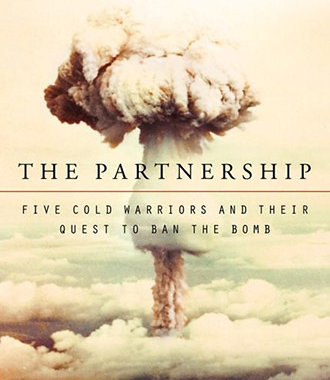In his recently published book, How Children Succeed: Grit, Curiosity, and the Hidden Power of Character, Paul Tough posits that character goes hand in hand with success. As he defines and describes it, character is not a moralizing agent tied to moral laws, but rather a composite of individual strengths that can be taught, learned, and practiced. He argues that incorporating character strengths such as grit, curiosity, perseverance, conscientiousness, self-regulation, optimism, and zest into your make-up increases the likelihood of achieving a measure of success that society regards as meaningful, worthwhile, and fulfilling.
But character, as Tough defines it, is paired with intervention to constitute a successful life, and intervention happens in different ways for different groups of people. For children of the middle class and children of affluence, intervention equates to their life-experience: college-educated parents; private pre-schools; elite public or private K-12 schools; enrichment activities such as regular visits to art museums, music, and dance concerts; international travel; tutors for testing and counselors for advice; and access to sports activities throughout childhood. For most of these children, who have not experienced the adverse effects of the stress of poverty, college as a destination is an expectation; they have assimilated the know-how and wherewithal by the time they apply. The gap between affluent Americans who earn bachelor’s degrees and the poor is now 45 points.
The story of success for children who are traumatized by the adverse effects of poverty, especially urban poverty, is neither comparable to or as achievable as the story described in the paragraph above. The environment in which these children live is more often traumatic and chaotic than not, and the consequences are harmful. These children “are more likely to have high ACE [Adverse Childhood Experiences] scores and less likely to have the kinds of secure attachment relationships with caregivers that buffer the effects of stress and trauma; this in turn means they likely have below-average executive-function skills and difficulty handling stressful situations. In the classroom, they are hampered by poor concentration, impaired social skills, an inability to sit still and follow directions, and what teachers perceive as misbehavior.” College is not a foregone conclusion for these children; in fact, without intense, continuous intervention, they most likely will not make it. But a mentor, a teacher, a wise counselor, or a respected great-grandmother might steer an adolescent into an academic mentoring program that gives her a fighting chance she will go to college and graduate.
This—the story of traumatized children living in poverty—grabs Tough’s attention in a most profound way. He asks: Why are some children trapped in their childhood beginnings, unable to transcend their harsh environment? Why do some of these children succeed and some children fail? What can we do, as a country, to secure a measure of success for a whole generation of children that may fall through the cracks? Tough writes in the introduction, “We haven’t managed to solve these problems because we’ve been looking for solutions in the wrong places. If we want to improve the odds for children in general, and for poor children in particular, we need to approach childhood anew, to start over with some fundamental questions about how parents affect their children; how human skills develop; how character is formed.” Where can we find the answers to these questions?
Over a period of three years, Tough traveled the country to interview an interdisciplinary network of neuroscientists, psychologists, educators, and economists who have been studying the biological effects of stress on the brain and on learning behavior; researching the malleability of character strengths and how to teach them to children; and creating intervention programs, such as KIPP (Knowledge is Power Program), YAP (Youth Advocate Program), OneGoal, Ounce of Prevention, and New York City’s Nurse Family Partnership, whose structure and goals are unlike anything that would be found in affluent neighborhoods.
Tough’s narrative of his journey through the cold, hard facts of science helps to connect the dots between stress, poverty, character, intervention, and success. And it takes center stage in How Children Succeed, for good reason: The new science shows “through experiment and analysis, how the experiences of our early years connect to outcomes in adulthood”—how it can act as a positive force in the real world. To illustrate: Nadine Burke Harris, the lead pediatrician of the Bayview Child Health Center in the poor neighborhood of Bayview-Hunters Point in San Francisco, saw mostly depressed, anxious, and traumatized young patients. The violence and chaos they experienced in their everyday lives included anything from physical and sexual abuse to physical and emotional neglect to mental illness and addiction. The stress from this environment revealed itself in panic attacks, eating disorders, and suicidal behavior.
Wanting to understand her young patients better and to mitigate the effects of stress in their lives, Burke Harris began to read widely in medical journals, especially in the fields of “neuroendocrinology (the study of how hormones interact with the brain) and stress physiology (the study of how stress affects the body).” She gained two significant insights from her research: “Scientists have reached a consensus in the past decade that the key channel through which early adversity causes damage to developing bodies and brains is stress.”
The second insight Burke Harris gleaned from her research involved the effects of early stress on the prefrontal cortex, the part of the brain “critical in self-regulatory activities of all kinds, both emotional and cognitive.” When the prefrontal cortex is compromised, children have trouble regulating their emotions and regulating their thoughts. Thus, those young patients living in Bayview-Hunters Point are at-risk school children: They have trouble concentrating, sitting still, following directions, managing their tempers, and calming themselves down.
This difficulty in regulation “has to do with a particular set of cognitive skills located in the prefrontal cortex known as executive functions.” The study of executive functions is an appealing new field of research for this reason: “improving executive function seems like a potentially promising vehicle for narrowing the achievement gap between poor kids and middle-class kids.” Burke Harris discovered through her research “…that in neighborhoods like Bayview-Hunters Point and Roseland, many of the problems we generally think of as social issues—the province of economists and sociologists—are actually best analyzed and addressed on the molecular level, down deep in the realm of human biology.” And down deep in the realm of human biology is the effect of stress on the executive functions of the prefrontal cortex.
Along with the inquiry into the new research into the biological basis of stress and its concomitant negative effects on children living in poverty, Tough interviewed young people who had not escaped the trauma of their early years, as well as those whose success seems, on the face of it, miraculous—unless you identify two important elements that led to that success: They learned how to integrate self-regulation, conscientiousness, perseverance, and optimism—all character strengths—into their daily lives, and to embrace intervention as they struggled to transcend their unfavorable circumstances and transform their lives.
Kewauna Lerma is one of these young people Tough interviewed. Born into poverty on the South Side of Chicago, Kewauna and her siblings had a “rootless, unsettled childhood,” living in shelters and friends’ homes and with her great-grandmother as her mother tried to sort out her life. She was not a child whose mother soothed her in her very young life: No one was present to buffer Kewauna “against the damage that adversity inflicts on a child’s stress response system….” Recent research has shown that a secure attachment early on to a nurturing parent or caregiver gives children a leg up: They are “better able to engage with preschool peers, better able to form close friendships in middle childhood, better able to negotiate the complex dynamics of adolescent social networks.”
Unfortunately, Kewauna was not one of those more socially adjusted children. She hated school, and it showed: She read poorly; she talked back to her teachers; she skipped classes. In sixth grade she was assigned to the slow class for bad behavior, and “…before the end of the year, she was kicked out of school for fighting.” Kewauna’s future looked bleak, like so many other children who had grown up in poverty, trapped in endless cycles “of absent or neglectful parents, malfunctioning schools, and bad decisions.” As a ninth grade student at ACE Tech Charter High School on the South Side of Chicago, she continued her reckless behavior, joining gangs, skipping school, and finishing the year with a GPA of 1.8. Just before the beginning of her sophomore year, she scuffled with a police officer and was arrested for the first time. Then something happened that broke this destructive cycle: Kewauna’s mother and her great-grandmother—“the one member of her family Kewauna had always respected”—told her she could avoid ending up like her mother: Getting arrested, having unplanned babies, living an impoverished life. She could go to college and have a career.
Tough met Kewauna in the winter of 2010 when she was a sophomore at ACE Tech, one of twenty Chicago high schools selected to run OneGoal, an intensive three-year intervention course for underperforming students who show promise. Selected to participate in the intensive college prep curriculum of OneGoal, Kewauna benefited immensely from OneGoal’s curriculum: preparation in content knowledge and test-taking strategies for the ACT test; help with writing college-admission application essays, choosing match schools, and finding scholarships; and practice in non-cognitive academic skills, or what OneGoal calls leadership principles: “resourcefulness, resilience, ambition, professionalism, and integrity”—all essential for a successful college career. Jeff Nelson, the founder and director of OneGoal, frankly assesses the future of his students: “ ‘We know that most of our kids are going to arrive in college academically behind their peers…. We can help them improve their ACT scores significantly, but it is unlikely that we’ll be able to close the gap on those tests entirely, simply because of the K-through-twelve system that our students grew up in. But what we also know, and what we tell our students, is that there is a way for them to offset that disparity. And the key is those five leadership abilities.’”
When Tough first met Kewauna, “you could have been forgiven for thinking that she had virtually no chance to succeed. Her destiny seemed sealed. But something in her changed.” And he wonders: Was it the talk with her mother, the positive influence of her great-grandmother, a teacher’s intervention? “Or was there something deep within her own character that inclined her toward the idea of hard work and success, despite all the obstacles she had faced and the mistakes she had made?” Was it the hidden power of character?
When she was ready to apply to college, Kewauna did not ace her ACT test; in fact, her scores were not only below the Chicago average but also below the standard college-readiness score of 20. Stalwarts of the “cognitive hypothesis”—IQ is the determinant of success and fixed early in life, and “education is not so much about providing skills as it is about sorting people and giving those with the highest IQs the opportunity to reach their full potential” in college—would reject Kewauna as a college prospect, no questions asked. But Kewauna had thrived in OneGoal, and she elected to attend Western Illinois University in Macomb. Because of her low ACT score, she took a support program for first-year students that provided extra tutoring and counseling, giving her the best opportunity to close the achievement gap. Jeff Nelson explains the thinking: “…if our kids are working diligently and building relationships with professors and studying and using all of the skills that we’ve trained them to use, they can close the gap. We’ve seen it time and time again, that all of a sudden a kid who might have been three or four grade levels behind in high school has caught up in a really significant way to his peers by the beginning of sophomore year.”
Kewauna fulfilled the promise of OneGoal at Macomb: She interacted with her professors on a regular basis; visited them during office hours, asking for help with difficult concepts; got help with her writing assignments through the freshman-support program; and identified students in class with whom she could work on assignments she did not understand when she could not reach the professor. She ended her first year at Macomb with a GPA of 3.8.
Psychologists call character “personality traits.” Economists use the term “non-cognitive skills” to describe it, and neuroscientists identify it as the “executive functions” of the pre-frontal cortex. Whether character is called personality traits, non-cognitive skills, or executive functions, bundled up in this great big word are grit, curiosity, perseverance, conscientiousness, self-regulation, optimism, and zest. When paired with intervention, character is the hidden power that can transform a child’s life from one of adversity to that of a successful college student and future college graduate, giving back to a society that did not offer her much in childhood.
Editor’s Note: Paul Tough has since released a new book, Helping Children Succeed, a “handbook to guide readers through the new science of success.” Visit the author’s website for more information.



2 comments
Really fascinating!
Thank you, Jamie, for reading this review. I found Tough’s premise persuasive because of the evidence he cited and his in-depth analysis. I continue to refer to what I learned from How Children Succeed. He also has an interesting website that you might enjoy. Also, there’s a documentary about the chess team he writes about.